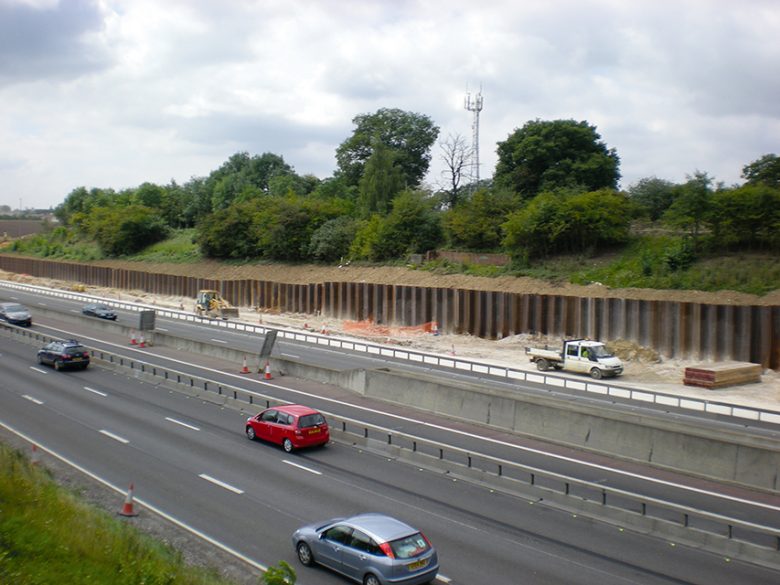
Retaining Walls
A retaining wall is a more or less rigid wall that supports the soil and water masses laterally so that the terrain can be retained at different levels on both sides of the wall. Fundamentally, retaining walls are used to change the elevation of the surrounding landscape for a variety of reasons, such as road and rail lines construction, landscaping, building construction, etc. They can also transmit significant vertical loads to the ground, in a similar way to bearing piles.
Steel sheet piles walls are relatively flexible retaining walls. Durability and driveability in the ground conditions are an important feature of the design. Structures shall be designed to sustain all actions and influences likely to occur during their execution and service life. Hence, retaining structures must have adequate:
A sheet pile retaining wall has a portion of its structure embedded in the soil below excavation level. The sheet pile section withstands the pressure from the soil and any other additional loads through the soil/structure interaction that exists in this embedded part, and additional support(s) (anchor or strut) in the upper part if necessary.
Note: retaining wall is a quite generic term that covers structures on land and on waterfronts, and structures for different applications. In harbour construction, retaining walls are called quay walls, in bridge construction, they will be used as bridge abutments, and so on.
Steel sheet piles walls are relatively flexible retaining walls. Durability and driveability in the ground conditions are an important feature of the design. Structures shall be designed to sustain all actions and influences likely to occur during their execution and service life. Hence, retaining structures must have adequate:
- structural resistance,
- serviceability,
- durability,
- watertightness (especially for pits and excavations).
A sheet pile retaining wall has a portion of its structure embedded in the soil below excavation level. The sheet pile section withstands the pressure from the soil and any other additional loads through the soil/structure interaction that exists in this embedded part, and additional support(s) (anchor or strut) in the upper part if necessary.
Note: retaining wall is a quite generic term that covers structures on land and on waterfronts, and structures for different applications. In harbour construction, retaining walls are called quay walls, in bridge construction, they will be used as bridge abutments, and so on.
Dernière modification : octobre 11, 2023


 English
English Deutsch
Deutsch Italiano
Italiano